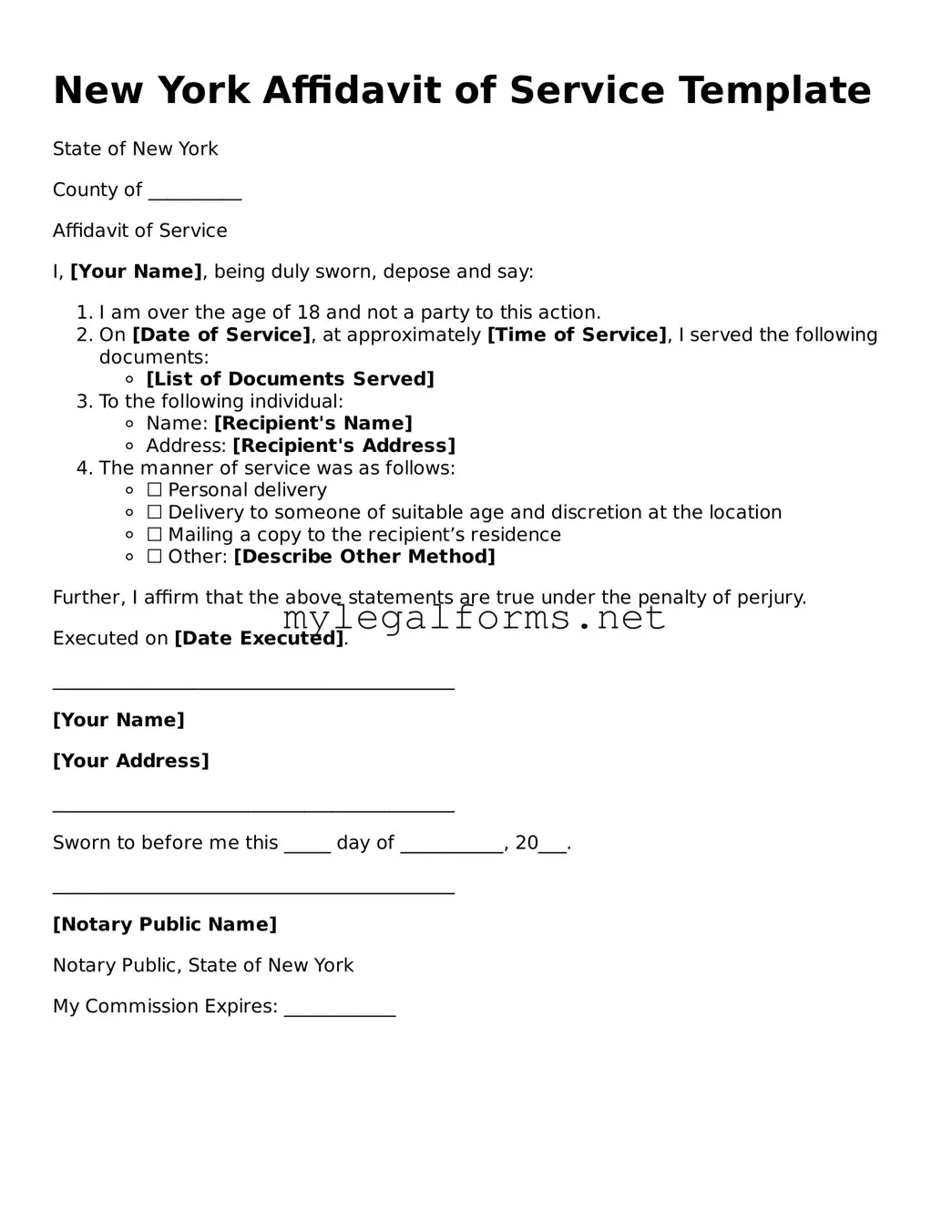New York Affidavit of Service Template
State of New York
County of __________
Affidavit of Service
I, [Your Name], being duly sworn, depose and say:
- I am over the age of 18 and not a party to this action.
- On [Date of Service], at approximately [Time of Service], I served the following documents:
- [List of Documents Served]
- To the following individual:
- Name: [Recipient's Name]
- Address: [Recipient's Address]
- The manner of service was as follows:
- ☐ Personal delivery
- ☐ Delivery to someone of suitable age and discretion at the location
- ☐ Mailing a copy to the recipient’s residence
- ☐ Other: [Describe Other Method]
Further, I affirm that the above statements are true under the penalty of perjury.
Executed on [Date Executed].
___________________________________________
[Your Name]
[Your Address]
___________________________________________
Sworn to before me this _____ day of ___________, 20___.
___________________________________________
[Notary Public Name]
Notary Public, State of New York
My Commission Expires: ____________
